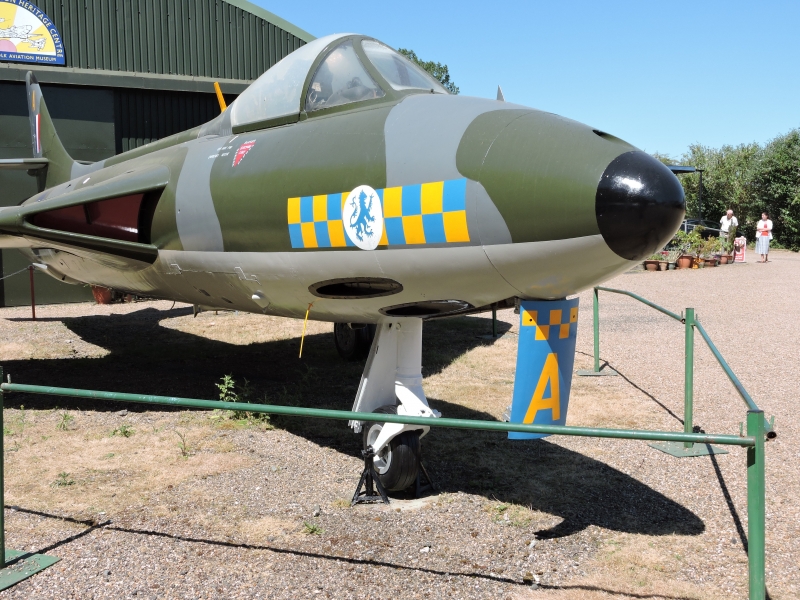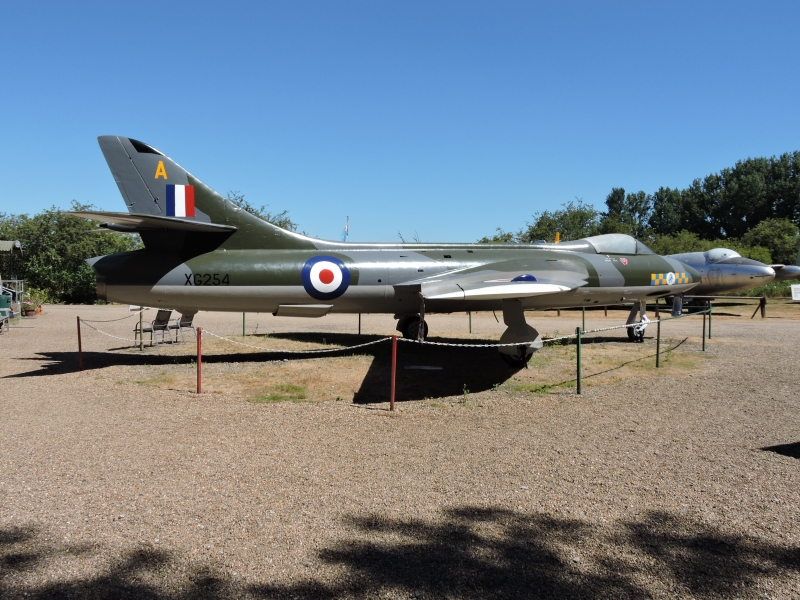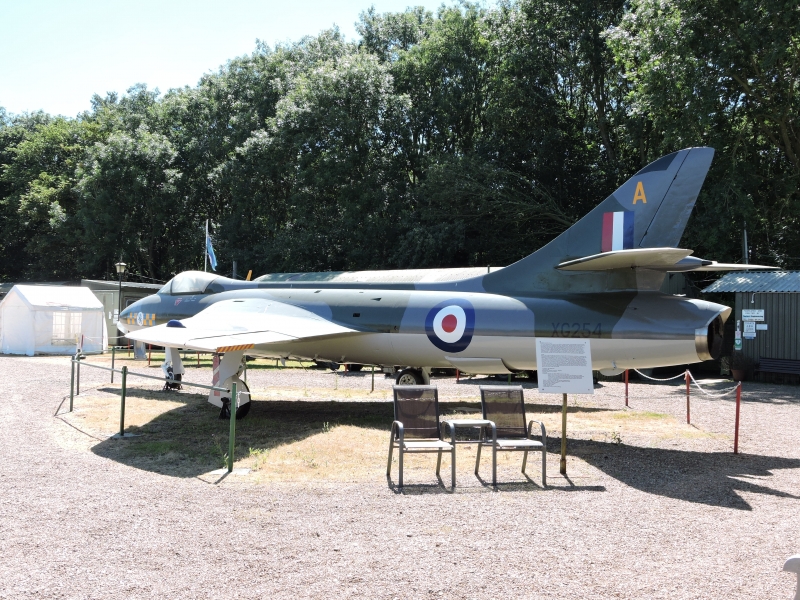HAWKER HUNTER FGA.9
The Hunter prototype took shape in early 1950, the design having evolved through a series of studies and experimental aircraft originating with the P.1040 Sea Hawk. Although various problems had to be eliminated by external modifications, these did not spoil the very graceful lines of the aeroplane. Almost 2,000 were produced, with nearly half going to air forces overseas, and when the type retired from RAF (officially in 1984) and Royal Navy service these were promptly snapped up by foreign buyers. The design progressed through various Marks, but the F6 was generally regarded to be the “definitive” version. Hunter aerobatic teams – 111 Squadron’s “Black Arrows” and 92 Squadron’s “Blue Diamonds” – thrilled airshow visitors in the late 1950s and early 1960s. It was a highly efficient and very popular aircraft, and examples still fly in several countries, particularly with enthusiasts.
XG254
Built as an F.6, this aircraft was allocated in January 1957 to 54 Squadron at Odiham in Hampshire and converted to FGA.9 configuration in the July of that year. The squadron moved to Stradishall, Suffolk, in 1959, then Waterbeach, Cambridgeshire in 1961, and on to West Raynham, Norfolk in 1963, with XG254 as “A”. Late in 1969, the Hunters became the UK Echelon of 4 Squadron, and early in 1970 went to Wittering, Cambridgeshire. This aircraft then went to Chivenor as “K” with 63 Squadron within 229 OCU, which became the Tactical Weapons Unit in 1974 at Brawdy, Wales, then transferred to 2TWU at Lossiemouth, Scotland, in 1978, and in 1981 to 1TWU at Brawdy as “57”. XG254 was allocated to St Athan, Wales, in July 1984, and finally to Coltishall, Norfolk, in December 1985 for Battle Damage Repair duties. Sold by the MOD in October 2000 to a salvage company near Clacton, the aircraft was loaned to the Museum in February 2002 and arrived here the same month. Unusually, the target-towing gear is still in place under the fuselage.
TECHNICAL INFORMATION
- Year Built: 1956
- Manufacturer: Hawker Aircraft Co., Kingston
- Purpose: Fighter, Ground Attack
- Crew: One
- Armament:
- Internal:
- Four 30mm ADEN cannons in the nose.
- External:
- two pylons under each wing with either free-fall bombs up to 1,000lb (454kg) weight,
- or 100-gallon (455 litre) Napalm tank,
- or 37x2in (52mm) honeycomb rocket pack,
- the outboard pylon being replaced by 12x3in (76mm) 60lb (27kg) rockets
- or combinations of 5in (130mm) HVAR, Oerlikon, Bofors and Hispano rockets of various sizes.
- Internal:
- Engine: Rolls-Royce Avon 207 with 10,150lb (4,603kg) thrust.
- Maximum Speed: Mach 0.95 – 714mph (1,149kph) at sea level.
- Service Ceiling: 51,000ft (15,697m)
- Wing Span: 33ft 8in (10.3m)
- Length: 45ft 10in (148m)
- Height: 13ft 2in (4m)
- Gross Weight: empty 13,010lb (5,901kg)





